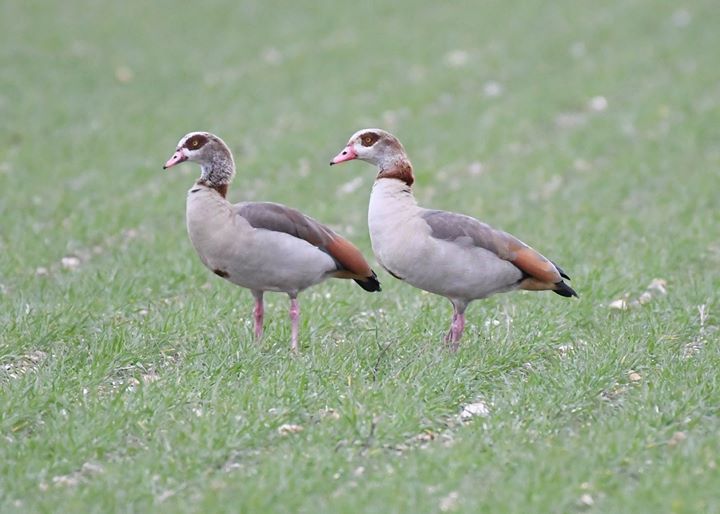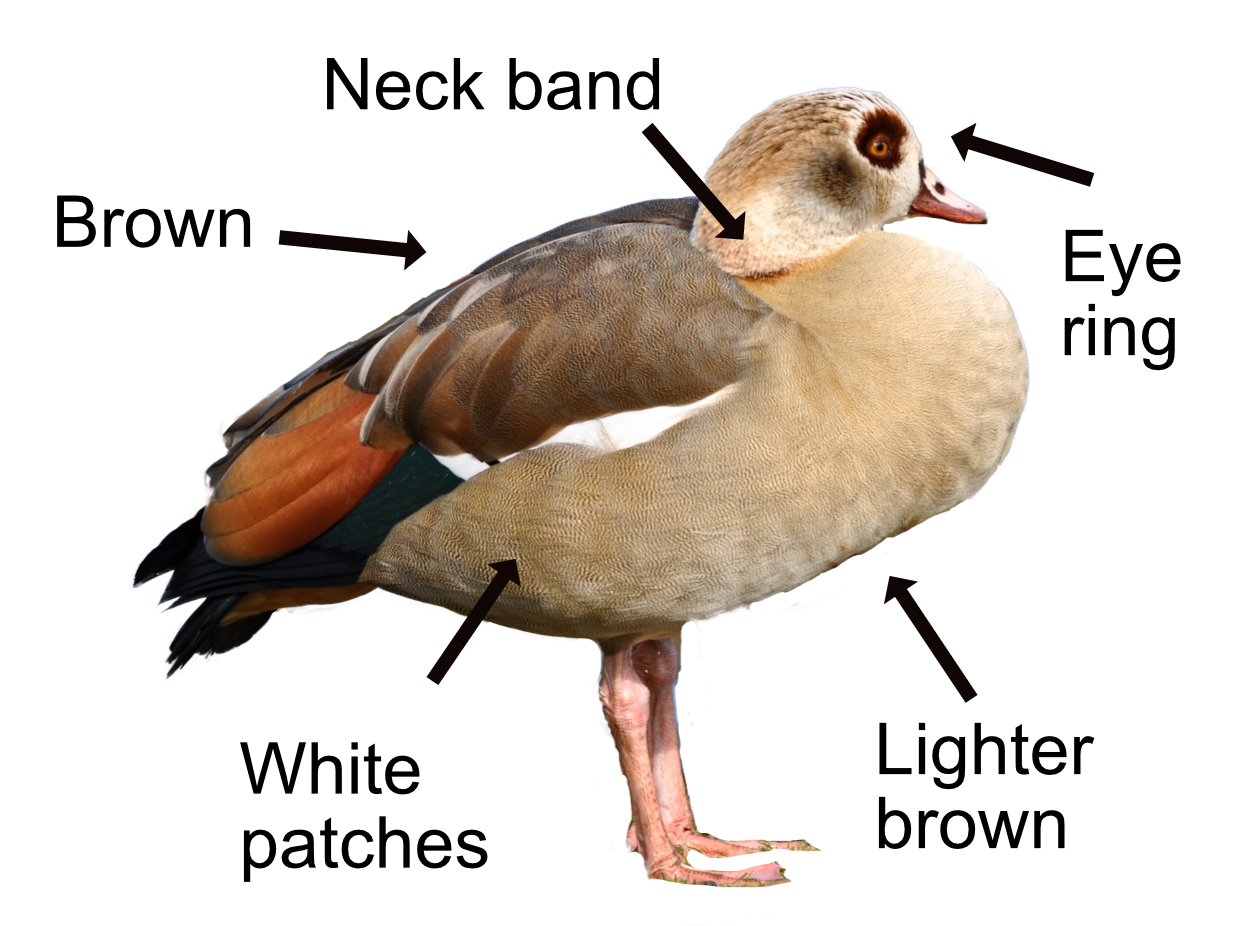
Egyptian Geese were considered sacred by the Ancient Egyptians and appeared in much of their artwork. They became popular in posh houses for looking pretty on their ornamental lakes and then escaped from Norfolk to spread across most of East Anglia and Southern England.
The Egyptian Goose is a good sized, sturdy goose that looks like it has had a bad make-up day. The male and female are identical with the male being slightly larger (not that you can tell). They are buff brown with a darker reddish brown back and pale grey underparts. There is a narrow neck band, dark mascara patch round the eye, and a dark spot on the breast. The wings are also dark with green and white patches, the white being very visible when flying. Their bill and feet are pink. Generally, the Egyptian Goose is silent. The male occasionally makes a husky wheezing call that sounds like a steam engine. The female sometimes makes a high pitched, unstoppable series of nagging "onk, onk, onk, onk!" Egyptian Geese are mainly vegetarians, to keep their figure, and feed on leaves, grasses and seeds.

The male Egyptian Goose attracts a female with an elaborate, noisy courtship that includes honking, neck stretching and feather displays. They mainly breed in posh parkland, reservoirs or lowland lakes, especially ornamental ones where they can look pretty. The nest is built in early spring from a mound of leaves and reeds. They are not too fussy where it is and can make it on a bank, in holes, or in trees (by using old nests of larger birds). They lay 8-9 eggs which hatch after 28 days. The young can soon feed themselves and are cared for by both parents. The youngsters can fly after 75 days, though the family stays together for months before they become fully independent. After all, it takes a while to learn how to put make-up on when you are a goose. Mum and dad are aggressively territorial when breeding and will frequently pursue intruders into the air, attacking them in aerial dogfights.
The Egyptian Goose is resident in Britain with about 2,500 breeding adults. Their Latin name is 'alopochen aegyptiacus' which comes from the Greek 'alopex' for 'fox' and 'chen' for goose because of the ruddy colour of their back. 'Aegyptius' is Latin for 'Egyptian'. Egyptian foxy goose is right for something that looks so exotic.